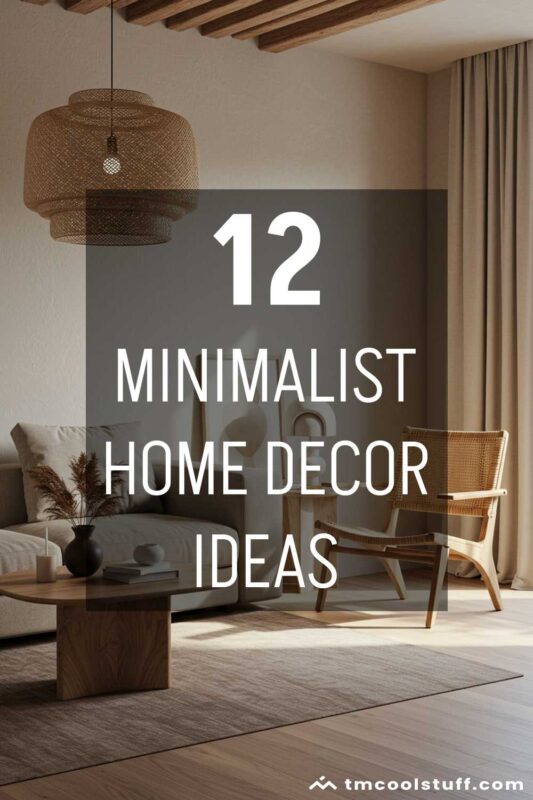Home Decor, Blog
12 Minimalist Home Decor Ideas That Will Transform Your Space Without Breaking the Bank
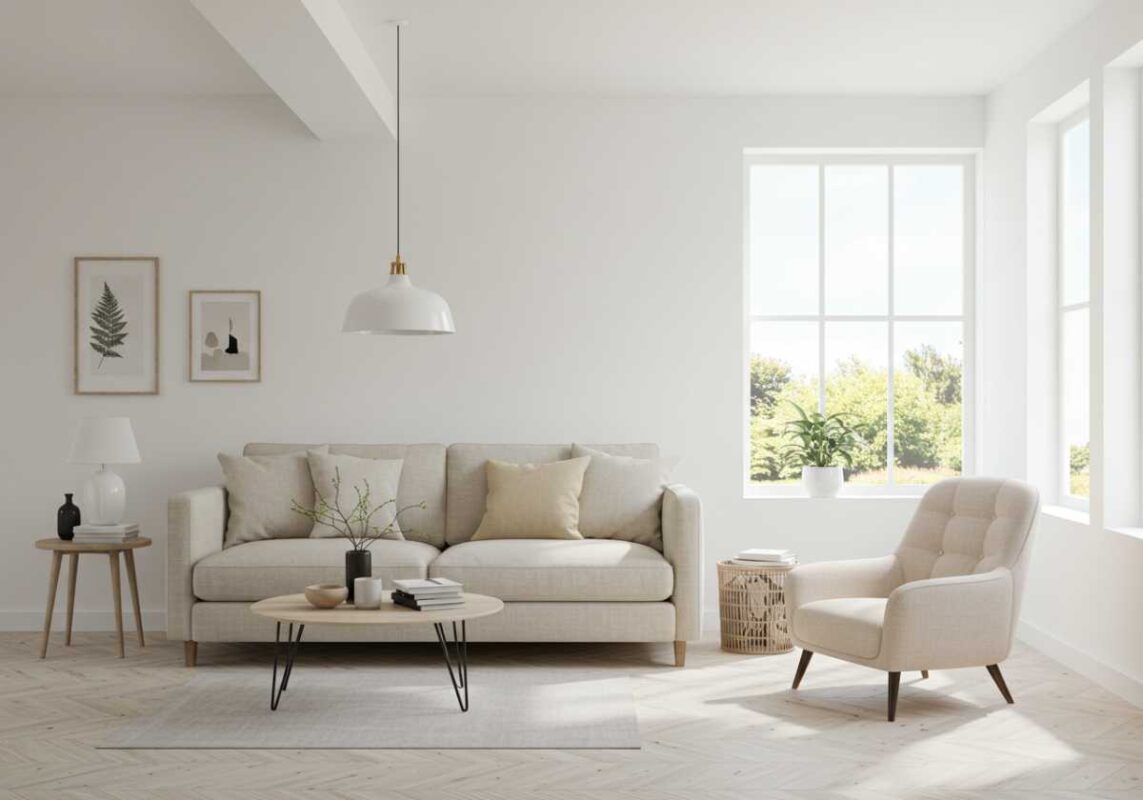
Ever walked into a room and felt instantly calm, like your blood pressure just dropped 10 points? That’s the magic of minimalist home decor—a style that embraces simplicity without sacrificing warmth. And no, I’m not talking about those sterile, white-washed spaces that look like nobody actually lives there. I’m talking about thoughtful, intentional minimalism that makes your home feel like a sanctuary rather than a museum exhibit.
While minimalism thrives on simplicity, its bold counterpart—maximalist decor—celebrates richness, color, and personality. If you’re curious about how to style a space that embraces the “more-is-more” aesthetic, check out my guide on maximalist home decor to explore daring patterns, vibrant textures, and expressive interiors.
As someone who spent years cramming every corner of my apartment with “stuff” (you know, just in case I needed that third blender someday), I’ve learned the hard way that less truly is more. So grab a coffee, get comfy, and let’s chat about how to transform your home into a minimalist haven that still feels like, well, home.
Table of Contents
What Is Minimalist Home Decor (And Why Should You Care)?
Before we dive in, let’s get one thing straight: minimalism isn’t about having nothing. It’s about having the right things.
Minimalist home decor focuses on simplicity, functionality, and intentionality. Each item earns its place through purpose or beauty (ideally both!). Think of it as Marie Kondo meets interior design—everything should either serve a function or spark joy.
But why should you care? Well, aside from making your space look Pinterest-worthy, minimalist decor has some pretty awesome benefits:
- Reduces stress and anxiety by removing visual clutter that bombards your brain
- Makes cleaning WAY easier (fewer things = less dusting)
- Saves you money in the long run (quality over quantity)
- Creates more physical space to breathe and move freely
- Boosts your mental clarity and helps you focus
And here’s the kicker—did you know that clutter has been scientifically linked to higher cortisol levels? Yeah, that pile of random stuff in your living room corner is literally stressing you out. No wonder I feel like I need a glass of wine every time I look at my “miscellaneous drawer” (which has somehow expanded to three drawers). 😃
1. Embrace the “One In, One Out” Rule
Have you ever bought something new, only to realize you already had something similar buried in a closet? raises hand guiltily
The “one in, one out” rule is exactly what it sounds like—for every new item you bring home, something else must go. This isn’t just about preventing clutter; it’s about making intentional choices about what deserves space in your home.
This rule forces you to ask yourself: “Do I really need this?” and “Is this better than what I already have?” If the answer is no to either question, leave it at the store. Your wallet (and your future self who has to clean) will thank you.
Pro tip: Before buying anything new, take a picture of the space where you plan to put it. This helps you visualize whether it’s actually necessary or just a momentary whim.
2. Choose Quality Over Quantity (Even When It Hurts)
Let’s be real—it’s tempting to buy the $20 lamp that looks almost like the $200 one. But here’s where minimalism actually saves you money in the long run.
Investing in fewer, higher-quality pieces means they’ll last longer, look better, and often bring more joy to your daily life. Plus, there’s something deeply satisfying about owning items made with care and craftsmanship.
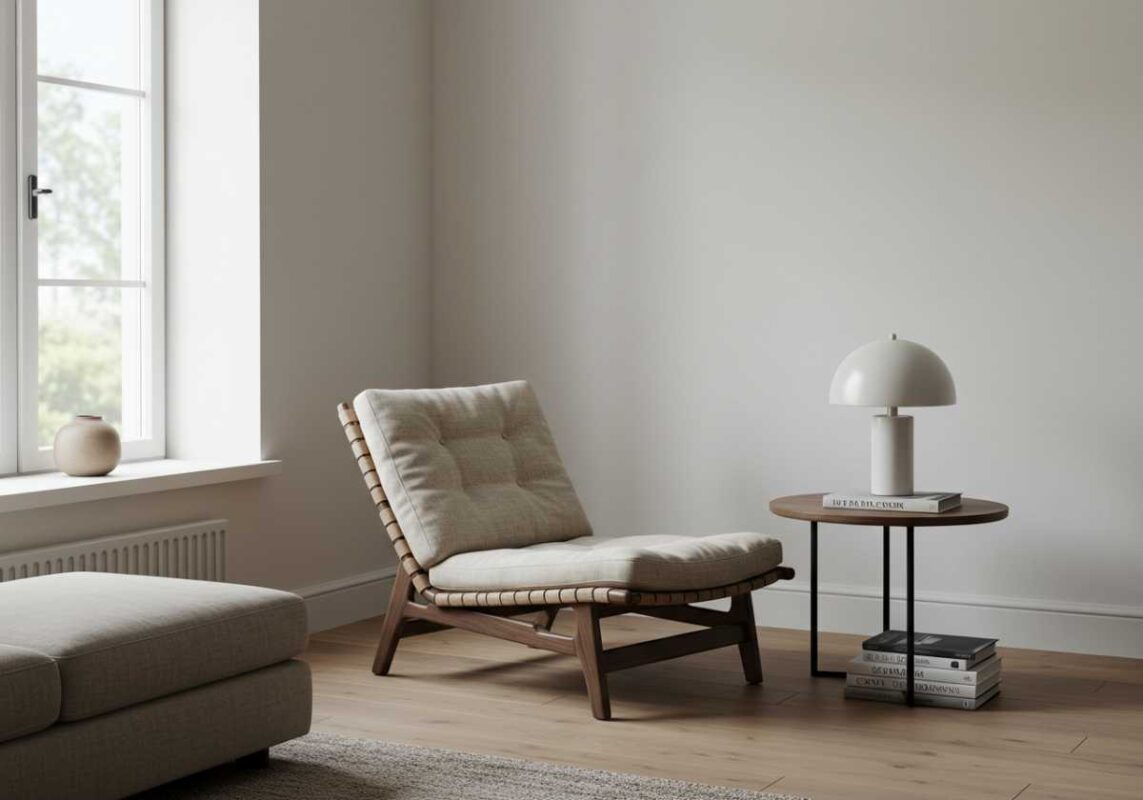
“But quality is expensive!” I hear you say. True, but consider this: would you rather have three cheap chairs that break after a year, or one beautiful, sturdy chair that lasts a decade? The math often works out in favor of quality when you look at cost-per-use.
3. Master the Art of Negative Space
Negative space—the empty areas between objects—is like the silence between notes in music. Without it, everything becomes noise.
In minimalist decor, negative space isn’t just “empty” space; it’s an intentional design element that gives your eyes a place to rest. It creates balance, highlights your carefully chosen items, and prevents visual overwhelm.
Try this experiment: Remove three decorative items from any surface in your home and see how it feels after living with it for a week. I bet you won’t even miss them, and you’ll notice the remaining pieces more.
Questions to ask yourself: “Does every inch of wall need art?” “Does every surface need something on it?” The answer is almost always no.
4. Warm Minimalism: The Cozy Middle Ground
Okay, let’s address the elephant in the room—classic minimalism can sometimes feel cold and uninviting. Nobody wants to live in a space that feels like a doctor’s waiting room, am I right?
Enter warm minimalism—the perfect balance between clean simplicity and cozy comfort. It’s minimalism with a soul.
According to a recent 2025 trend report, warm minimalism is becoming increasingly popular as people seek spaces that are both decluttered AND inviting. Here’s how to achieve it:
- Add texture through natural materials like wood, linen, wool, and stone
- Choose a warm color palette of cream, beige, terracotta, and earthy tones
- Incorporate plants to add life and natural elements
- Use soft, ambient lighting instead of harsh overhead lights
- Select rounded or organic shapes rather than rigid, geometric ones
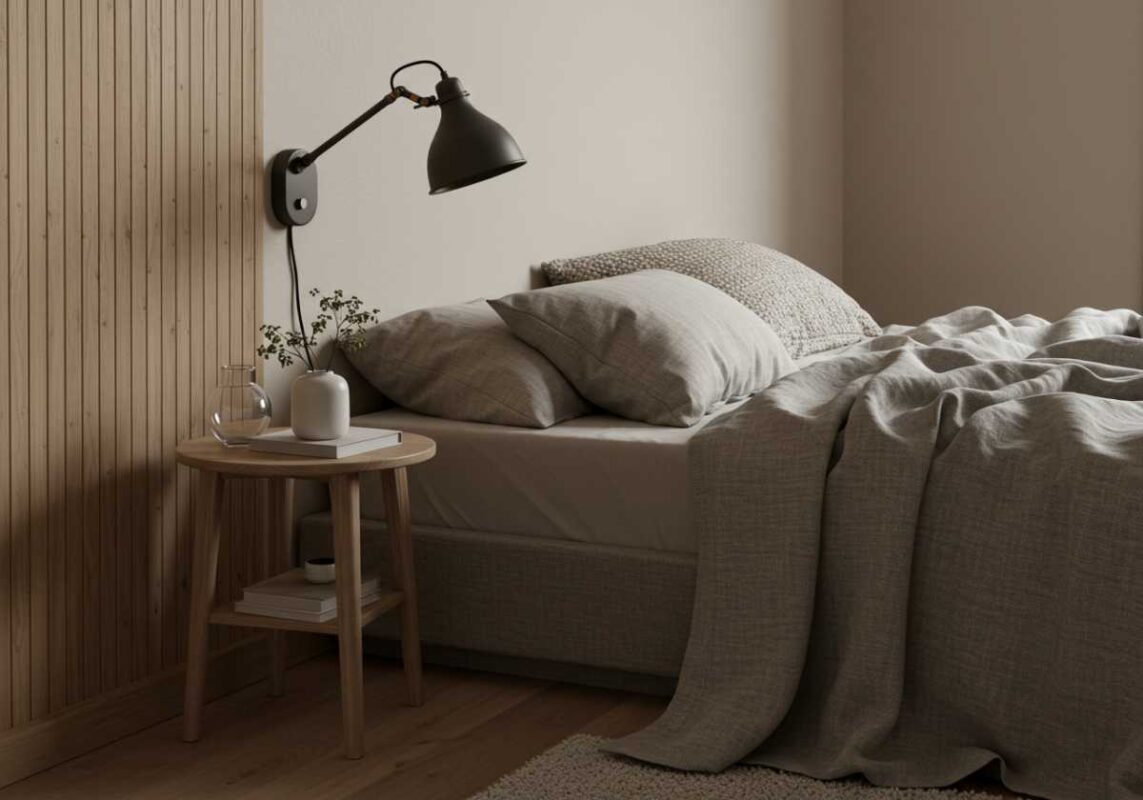
“I’ve found that adding just one textured throw blanket to my minimalist sofa makes the entire room feel more inviting without adding visual clutter,” shares interior designer Sarah Storms in a recent Vogue interview. “The key is being selective about which cozy elements you introduce.” Vogue
5. Focus on Multi-Functional Furniture
Why have five different pieces of furniture when one can do multiple jobs? Multi-functional furniture is the superhero of minimalist homes.
Think:
- A storage ottoman that works as seating, storage, and a coffee table
- A sleeper sofa for guests that doesn’t require a dedicated guest room
- A dining table that doubles as a work desk
- Wall-mounted desks that fold away when not in use
- Nesting tables that can be separated when needed
The beauty of multi-functional furniture isn’t just about saving space—it’s about maximizing utility while minimizing visual noise. And honestly, there’s something pretty satisfying about items that work as hard as you do.
Rhetorical question: Why own three pieces of furniture when one piece can do the job of all three?
6. Create a Cohesive Color Palette
Ever walked into a room and felt instantly at peace without knowing why? Often, it’s because of a cohesive color palette working its magic on your brain.
In minimalist decor, color isn’t about restriction—it’s about intention. Limiting your palette to 2-3 main colors (plus neutrals) creates visual harmony and makes decorating decisions much simpler.
According to Benjamin Moore’s 2025 color trends, minimalist spaces are embracing warmer neutrals over stark whites. The paint brand reports that “warm minimalism incorporates creamy whites, ivory, beige, tan, oatmeal tones, and soft browns” as base colors, with optional subtle accent colors.
Pro tip: Take a cue from nature for your color palette—natural color combinations are inherently harmonious to our eyes.
7. Declutter Like You Mean It (But Make It Sustainable)
Alright, time for some tough love. Decluttering isn’t a one-time event; it’s an ongoing practice. And it doesn’t have to mean filling up landfills.
Sustainable decluttering follows these principles:
- Repair before replacing whenever possible
- Donate usable items to those who need them
- Sell valuable items you no longer need
- Recycle responsibly what can’t be reused
- Compost organic materials rather than trashing them
I recently tried the 30-day minimalism game where you get rid of one item on day one, two on day two, and so on. By the end of the month, I’d cleared out 465 items without creating a mountain of trash. Some were donated, some sold, some recycled—and honestly, I haven’t missed a single thing.
Bold confession time: Most of us use only 20% of our stuff 80% of the time. The rest is just… there.
8. Let Natural Light Take Center Stage
Natural light is minimalism’s best friend. It makes spaces feel larger, improves your mood, and reduces the need for decorative elements.
To maximize natural light:
- Use sheer window coverings or none at all if privacy isn’t an issue
- Place mirrors strategically to reflect light deeper into rooms
- Choose light, reflective colors for walls and larger furniture
- Keep windows clean (it makes a bigger difference than you’d think)
- Trim outdoor foliage that blocks light from entering
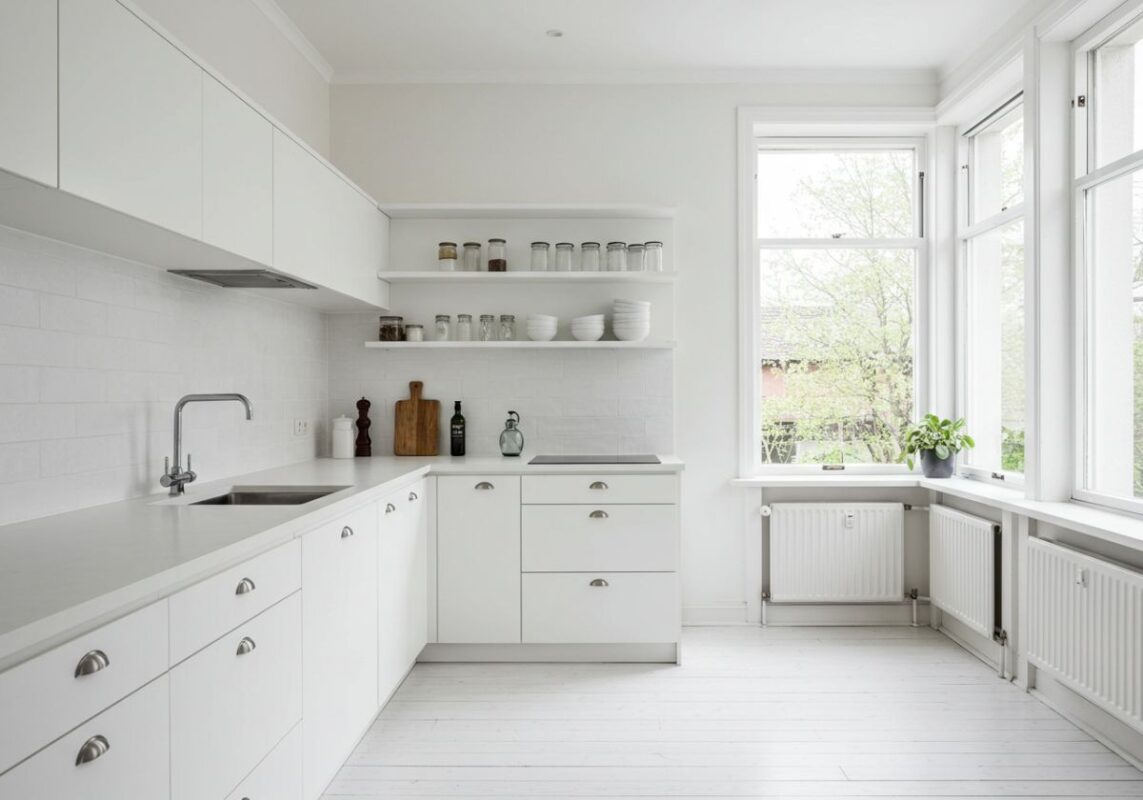
“Natural light is the most underrated decor element,” notes designer Katie Harbison. “It transforms spaces in ways that no purchased item ever could.” And the best part? It’s completely free!
9. Organize with Hidden Storage Solutions
Look, even minimalists have “stuff”—the difference is you don’t see it all. Smart storage is the secret weapon of minimalist homes.
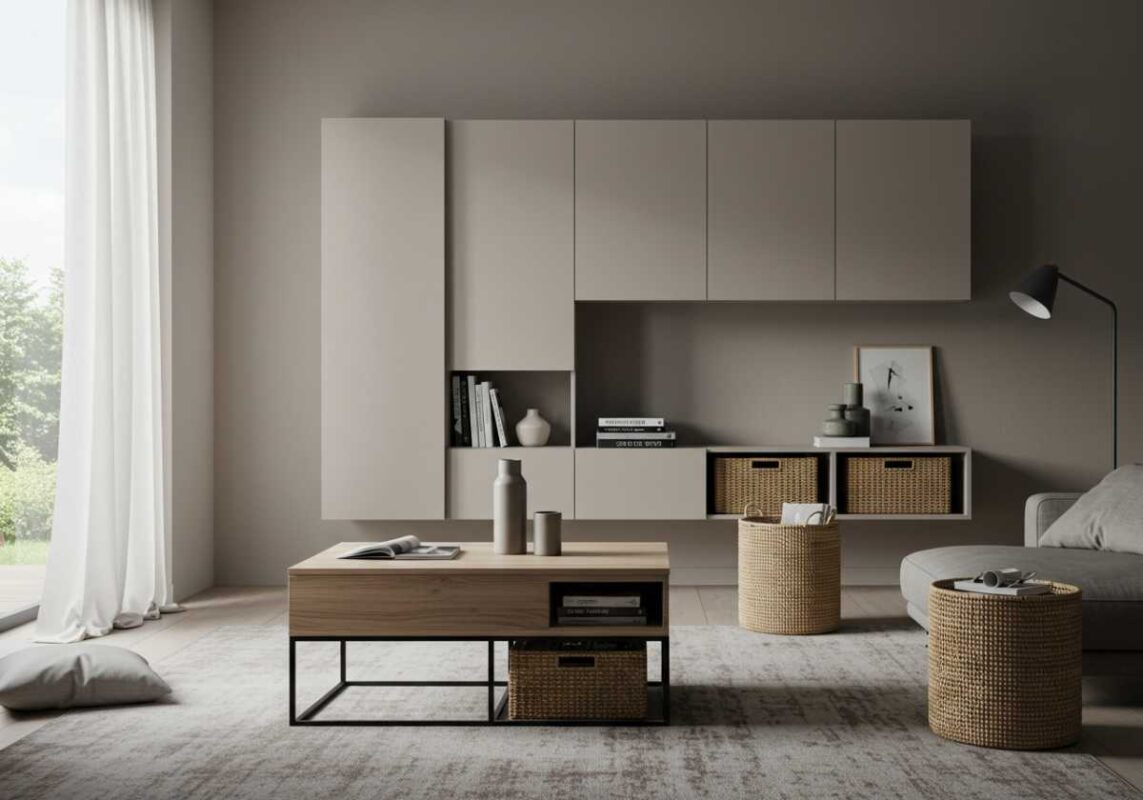
Effective hidden storage includes:
- Furniture with built-in storage (platform beds with drawers, hollow ottomans)
- Wall-mounted cabinets that don’t take up floor space
- Under-bed storage for seasonal items
- Floating shelves in unused wall areas
- Decorative baskets that hide smaller items while adding texture
According to home organization expert Marie Kondo, “The goal of storage should be to make it as simple as possible to put things away, not just to make things look neat.” Amen to that.
10. Add Statement Pieces (Yes, Really!)
Surprise! Minimalism doesn’t mean every item must be bland and boring. In fact, carefully chosen statement pieces often shine brighter in a minimalist setting.
The key is selectivity—choose one or two incredible pieces per room that truly speak to you. Maybe it’s a bold piece of artwork, an unusual light fixture, or a vintage chair in a standout color.
When everything in your space is intentional, these statement pieces become focal points rather than getting lost in visual clutter. They tell your story without shouting over a hundred other items.
Worth asking yourself: “If I could only keep three decorative items in this room, which would they be?” Those are your true statement pieces.
11. Embrace Mindful Technology Integration
We live in a digital world, but that doesn’t mean our homes need to look like electronic superstores.
Mindful technology integration means:
- Hiding cords and cables whenever possible
- Choosing electronics that complement your aesthetic
- Creating dedicated charging stations out of sight
- Considering wireless options where feasible
- Limiting screens to specific areas rather than every room
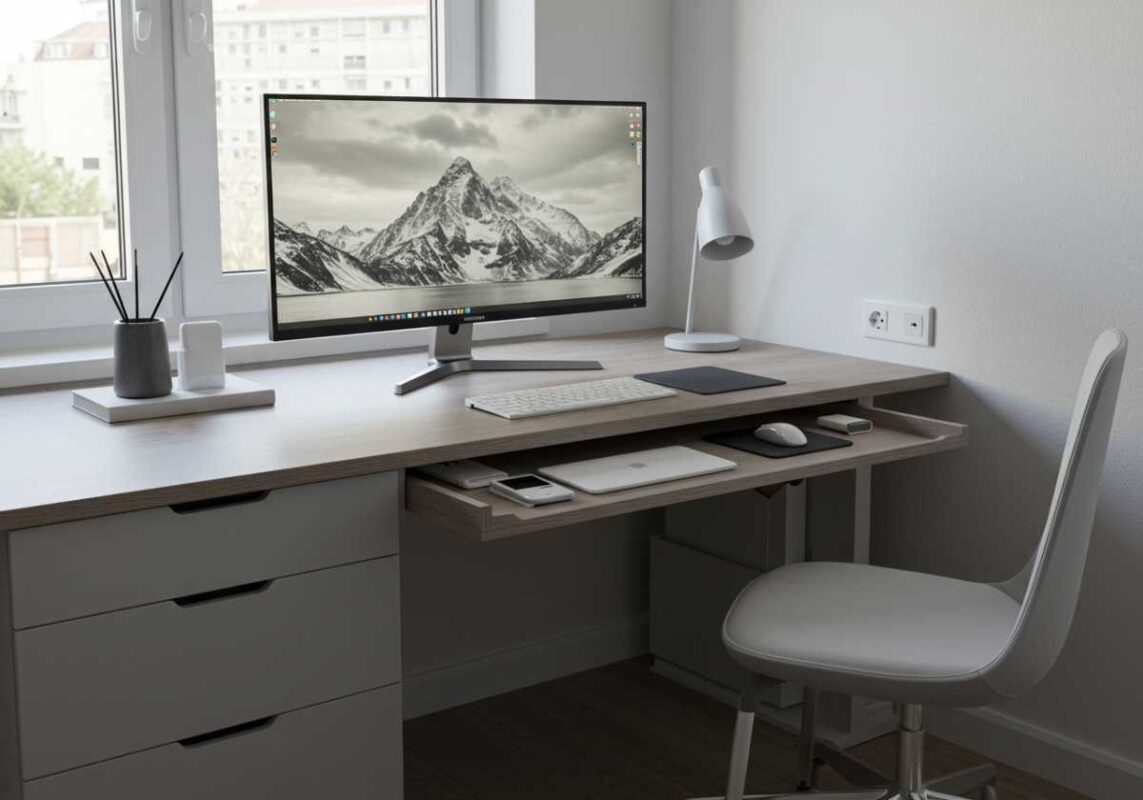
I recently invested in a smart TV that doubles as art when not in use, and it’s been a game-changer for my living room aesthetic. Technology doesn’t have to be an eyesore!
12. Practice the “Wait 30 Days” Rule for New Purchases
Last but definitely not least, the “wait 30 days” rule has saved me from countless unnecessary purchases.
It’s simple: When you see something you want to buy for your home, add it to a wishlist and wait 30 days before purchasing. If you still want it after a month, it’s probably not an impulse buy but something you’ll truly value.
You’d be amazed at how many “must-have” items lose their appeal after a few weeks of perspective. And for the ones that don’t? You’ll appreciate them so much more when you finally bring them home.
Honest truth: About 80% of the things I initially want for my home fall off my radar within 30 days. That’s a lot of money saved and clutter avoided!
Minimalism Isn’t About Perfection
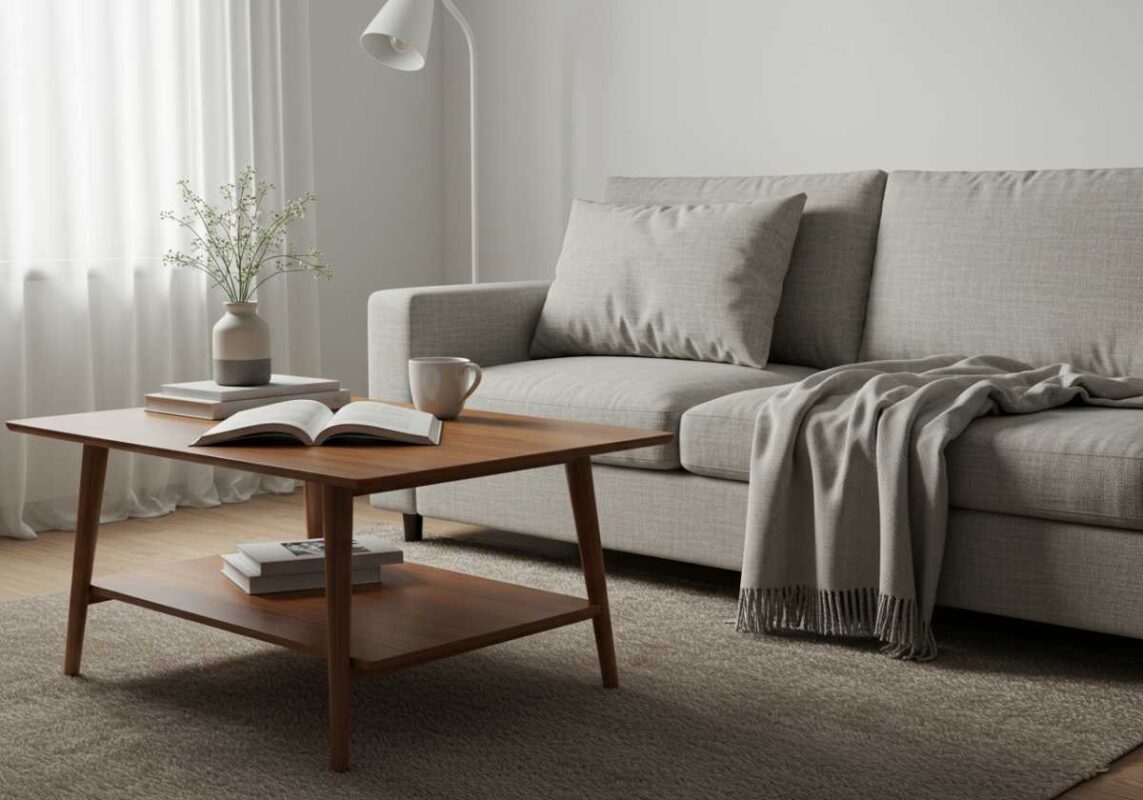
Look, I don’t want you to walk away thinking minimalism means living in a spotless showroom. It’s about creating space for what matters to you and removing what doesn’t.
Some days, my “minimalist” home has dishes in the sink and mail on the counter. That’s life. The difference is that when I clean up, everything has a place to go, and the baseline state of my home is calm and functional.
Minimalism isn’t about achieving some perfect aesthetic—it’s about creating a home that supports your wellbeing rather than draining it. And that’s something we could all use a little more of, don’t you think?
What’s your biggest challenge with minimalist decor? Is it letting go of sentimental items, or finding storage solutions that actually work? Drop a comment below—I’d love to hear your thoughts!
